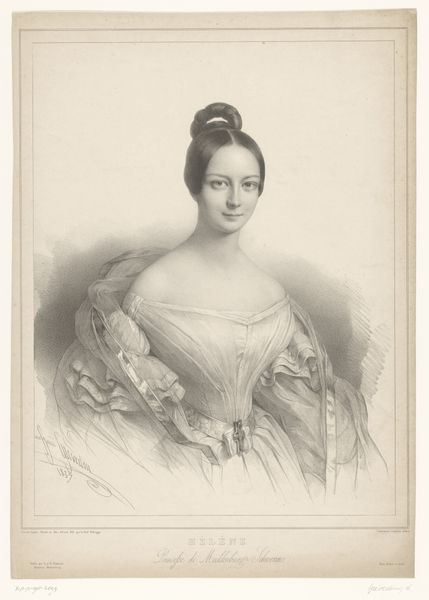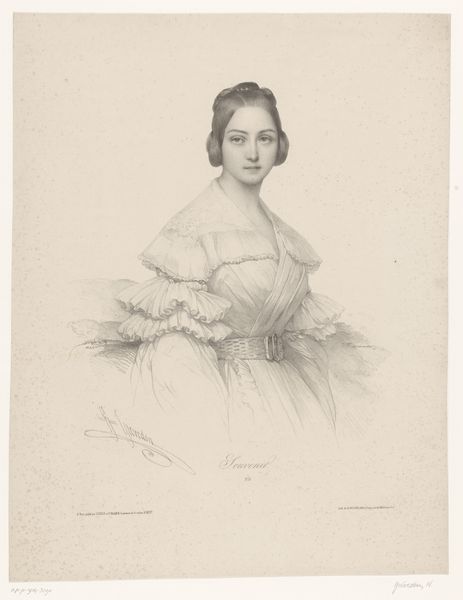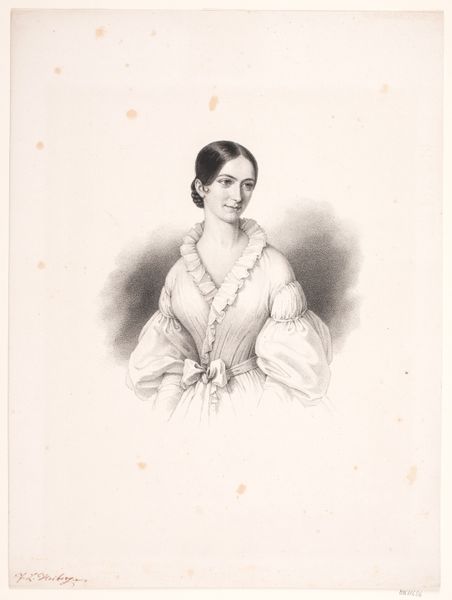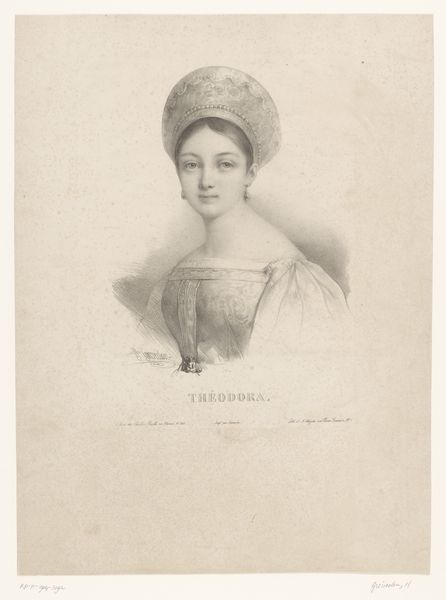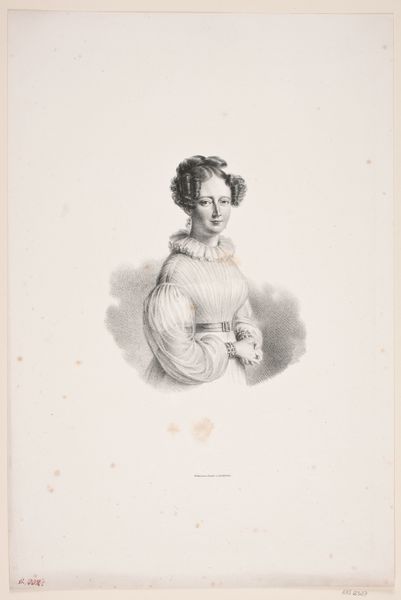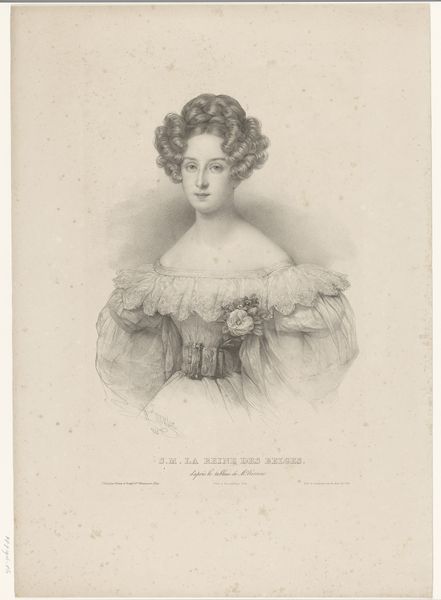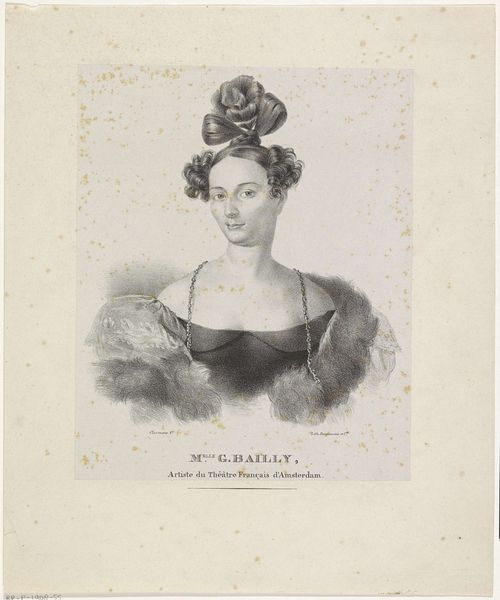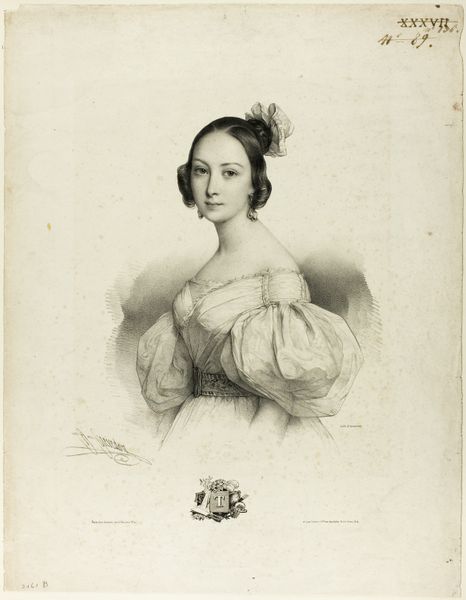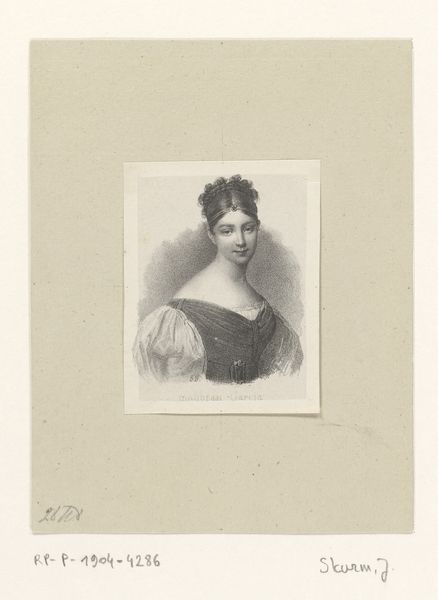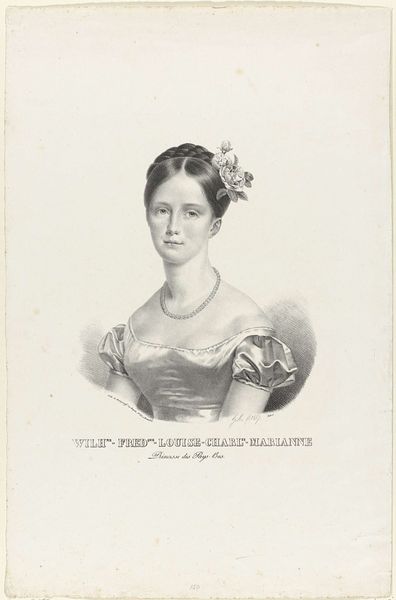
drawing, pencil
#
portrait
#
drawing
#
16_19th-century
#
neoclassicism
#
pencil drawing
#
pencil
#
portrait drawing
#
academic-art
Dimensions: height 550 mm, width 425 mm
Copyright: Rijks Museum: Open Domain
Charles Billoin created this print of Helene van Mecklenburg-Schwerin using lithography. In 19th-century Europe, the rise of lithography democratized portraiture. Before, only the wealthy could afford painted portraits, but prints made likenesses accessible to a wider audience, shaping public perceptions of the elite. This image, with its delicate rendering and neoclassical dress, presents Helene as an ideal of feminine virtue and aristocratic grace, reinforcing the social hierarchy. France, where Billoin worked, was then navigating political upheaval, with the July Revolution reshaping power dynamics. Portraits like this one served to legitimize and idealize the ruling class, presenting them as symbols of stability and continuity. To fully understand this print, we can research the history of lithography, portraiture conventions, and the social role of the French aristocracy in the 1800s. Understanding the culture that produced an artwork helps us understand the artwork itself.
Comments
No comments
Be the first to comment and join the conversation on the ultimate creative platform.
